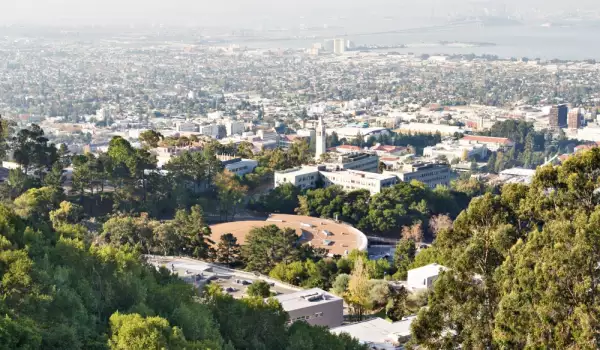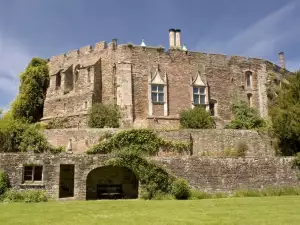Berkeley

Berkeley is a city located in the San Francisco Bay in Northern California. The city is located within the county of Alameda. The population is about 113 000 people. Berkeley is home to the University of California, Berkeley. This is the oldest University of the California system.
The history of Berkeley began thousands of years ago when at the place where today the city is located lived the Indians Ohlone. Of their existence today resmind pits in rock formations, which they used to grind acorns. Many artifacts were discovered in the fifties of the twentieth century in the city center.
The first Europeans arrived in the region in 1776. Luís Peralta was donated a huge piece of land for his service to the Spanish king. He used the land to create a ranch. He named it Rancho San Antonio. At the ranch animals were kept for meat, but also hunting and agricultural activity too place. Peralta’s land was divided into four parts – to each of his sons. The area where today the city of Berkeley is, had been given to Domingo, a small part of the city was situated on the territory of the other plots of the four sons - Vicente. Since that time there remains a single artifact. For Domingo and Vicente Peralta remain only city streets that bear their names.
In 1866, the private college in Oakland, California was looking for a place to build a building. While watching the placewhere now Berkeley is, the group of people looking for a suitable place for building, were captivated by the sight. One of them, Frederick Billings recalled the words of Anglo-Irish Bishop George Berkeley: "the West’s course of history takes its time." Then the group of people decided to name the place, Berkeley, and this is the name of the college.

To raise funds to build a new campus, they sold plots of land near the new building. They had to enter into cooperation with California because they could not implement this idea, and in 1868 was created the University of California.
In 1870, the transcontinental railway reached Oakland. This created a powerful economic growth in the city of Berkeley, where the railway passes. In 1876 the city of Berkeley introduced Prohibition. The law issued a restriction within a mile - they forbade the sale and consumption of alcohol to one mile from the new University of California. In 1899, Berkeley residents voted their city to become a free of alcohol zone.
In 1878, people living near the university campus, together with local farmers, announced the settlement of the town of Berkeley. In 1888 the city already had electric lights.
Economic growth in Berkeley took a knock with the great San Francisco earthquake of 1906. The city had not suffered from the earthquake, but thousands of people left the area.
The Great Depression affected Berkeley quite badly, but thanks to the economy of the university, it managed to maintain at least some stability. In the autumn of 1923 a strong fire destroyed six hundred and forty buildings in the city.
During World War II the city experienced a new resurgence, as many people moved into the area to work in industries serving the needs of the military.
In the late sixties of the twentieth century in the city there were sudden social changes. At that time the city had a widespread hippie movement. In the seventies of the twentieth century, it does not have much population growth as many people moved because of rising costs in the Bay Area. In the first decade of the twenty-first century property prices in Berkeley were among the most expensive in the country.








